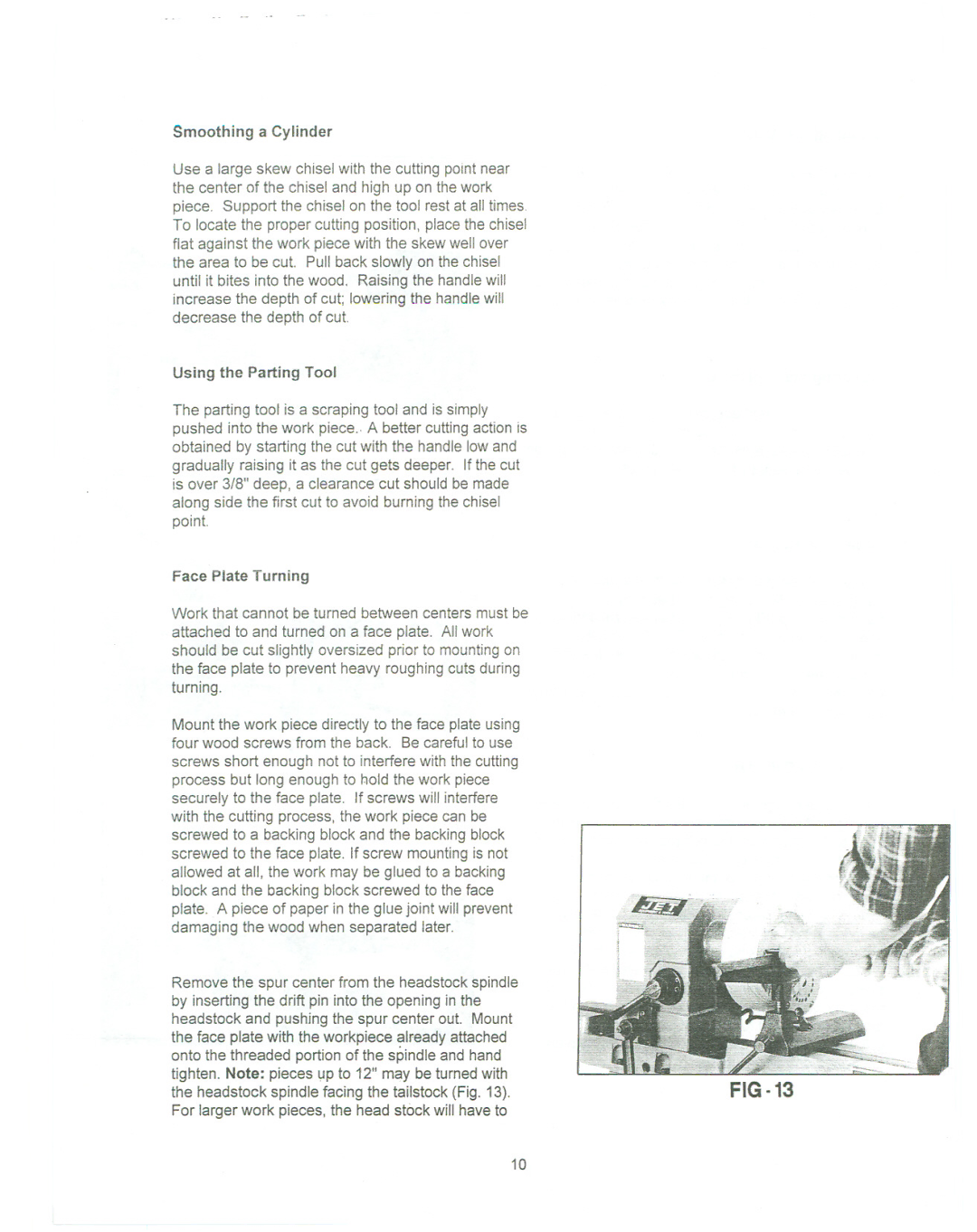
Smoothing a Cylinder
Use a large skew chisel with the cutting point near the center of the chisel and high up on the work piece. Support the chisel on the tool rest at all times. To locate the proper cutting position, placethe chisel flat against the work piece with the skew well over the area to be cut. Pull back slowly on the chisel until it bites into the wood. Raising the handlewill increase the depth of cut; lowering the handlewill decrease the depth of cut.
Using the Parting Tool
The parting tool is a scraping tool and is simply pushed into the work piece.. A better cutting action is obtained by starting the cut with the handle low and gradually raising it as the cut gets deeper. If the cut is over 3/8" deep, a clearance cut should be made along side the first cut to avoid burning the chisel point.
Face Plate Turning
Work that cannot be turned between centers must be attached to and turned on a face plate. All work should be cut slightly oversized prior to mountingon the face plate to prevent heavy roughing cuts during turning.
Mount the work piece directly to the face plate using four wood screws from the back. Be careful to use
screws short enough not to interfere with the cutting process but long enough to hold the work piece securely to the face plate. If screws will interfere with the cutting process, the work piece can be screwed to a backing block and the backing block screwed to the face plate. If screw mounting is not allowed at all, the work may be glued to a backing block and the backing block screwed to the face plate. A piece of paper in the glue joint will prevent damaging the wood when separated later.
Remove the spur center from the headstock spindle by inserting the drift pin into the opening in the headstock and pushing the spur center out. Mount the face plate with the workpiece already attached onto the threaded portion of the spindle and hand tighten. Note: pieces up to 12" may be turned with
the headstock spindle facing the tailstock (Fig. 13).FIG
10
